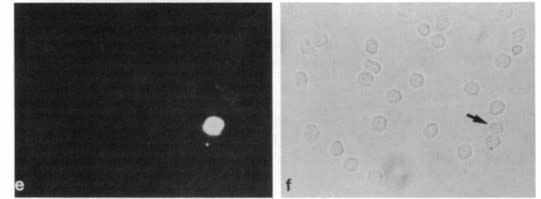
Cat. #160522
Anti-RA056/11.56.1 [11.56.1]
Cat. #: 160522
Unit size: 100 ug
Target: Neutrophil Extracellular Trap Antigen
Class: Recombinant
Application: ELISA ; WB
Host: Human
£300.00
This fee is applicable only for non-profit organisations. If you are a for-profit organisation or a researcher working on commercially-sponsored academic research, you will need to contact our licensing team for a commercial use license.
Contributor
Institute: Queen Mary University of London
Tool Details
*FOR RESEARCH USE ONLY
- Name: Anti-RA056/11.56.1 [11.56.1]
- Alternate name: NET (Neutrophil Extracellular Trap)
- Research fields: Drug development;Neurobiology
- Clone: 11.56.1
- Class: Recombinant
- Conjugation: Unconjugated
- Host: Human
- Application: ELISA ; WB
- Description: Rheumatoid arthritis (RA) is a joint-destructive inflammatory disorder characterized by breach of self-tolerance and production of antiÄËĂÂĂÂcit-peptide/protein Abs (ACPA). In the RA synovium, ectopic germinal centers (GCs) support an autoantigen-driven immune response leading to local ACPA+ B cell differentiation (1, 2). Recently, we reported that autoreactive B cells highly mutated within ectopic GCs frequently target cit-histones (cit-H2A/B) contained in neutrophil extracellular traps (NETs) (3). Somatic hypermutation (SHM) within GCs introduces single-point mutations in the variable heavy (VH) and/or variable light (VL) region of unmutated (germline) BCR, thus regulating Ag-driven B cell affinity maturation (4). Additionally, SHM can introduce N-glycosylation sites in the VH/VL regions, which can influence Ag binding and/or give an advantage during the selection process to autoreactive B cells (5ÄËĂÂĂÂ7). Circulating and synovial fluid ACPA-IgG are extensively N-glycosylated in their Fab domain and this is due to introduction of N-glycosylation sites during SHM. The biological effects mediated by the glycans in the variable domain of ACPA-IgG might modulate either the Ag binding and/or BCR signalling or might influence the binding to lectins thus giving survival signals to autoreactive B cells (5, 7, 8). Therefore, additional studies are necessary to enhance our understanding of ACPA-IgG Fab N-glycans. In particular, a direct demonstration of the relative contribution of SHM in the VH versus VL region and of the importance of Fab N-glycosylation sites for synovial B cell recognition of cit-Ags is missing. Therefore, in this study we characterized the requirement for SHM within the VH and VL regions and of Fab N-linked glycosylation for the immunoreactivity to NETs and cit-H2B in RA-rmAbs derived from CD19+ B cells obtained from ectopic lymphoid structure (ELS)+ RA synovial tissues. In particular, we present three different scenarios whereby 1) SHM in the VH region is sufficient for the binding to NETs/cit-H2B; 2) both VH and VL chain affinity maturation contribute to the immunoreactivity; and 3) the introduction of a single Fab N-glycosylation site account for most of the RA-rmAbs binding to cit-H2B. PMID: 32221039J Immunol. 2020 May 1;204(9):2374-2379. doi: 10.4049/jimmunol.1901457. Epub 2020 Mar 27.
- Immunogen: TBD
- Immunogen uniprot id: TBD
Target Details
- Target: Neutrophil Extracellular Trap Antigen
- Target background: Rheumatoid arthritis (RA) is a joint-destructive inflammatory disorder characterized by breach of self-tolerance and production of antiÄËĂÂĂÂcit-peptide/protein Abs (ACPA). In the RA synovium, ectopic germinal centers (GCs) support an autoantigen-driven immune response leading to local ACPA+ B cell differentiation (1, 2). Recently, we reported that autoreactive B cells highly mutated within ectopic GCs frequently target cit-histones (cit-H2A/B) contained in neutrophil extracellular trap...
Applications
- Application: ELISA ; WB
Handling
- Format: Liquid
- Unit size: 100 ug
- Shipping conditions: Shipping at 4° C



